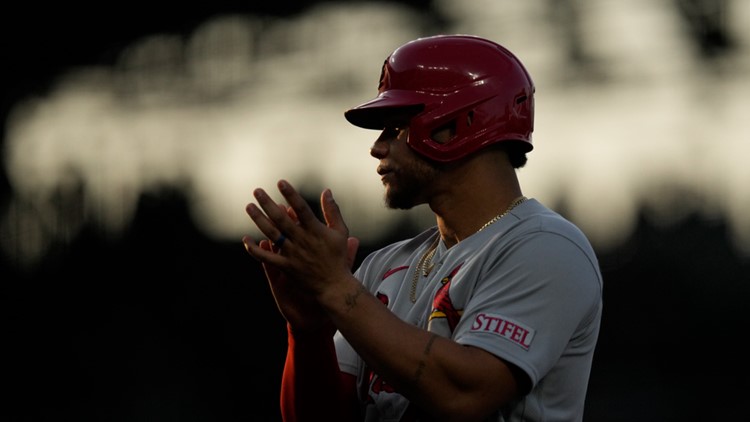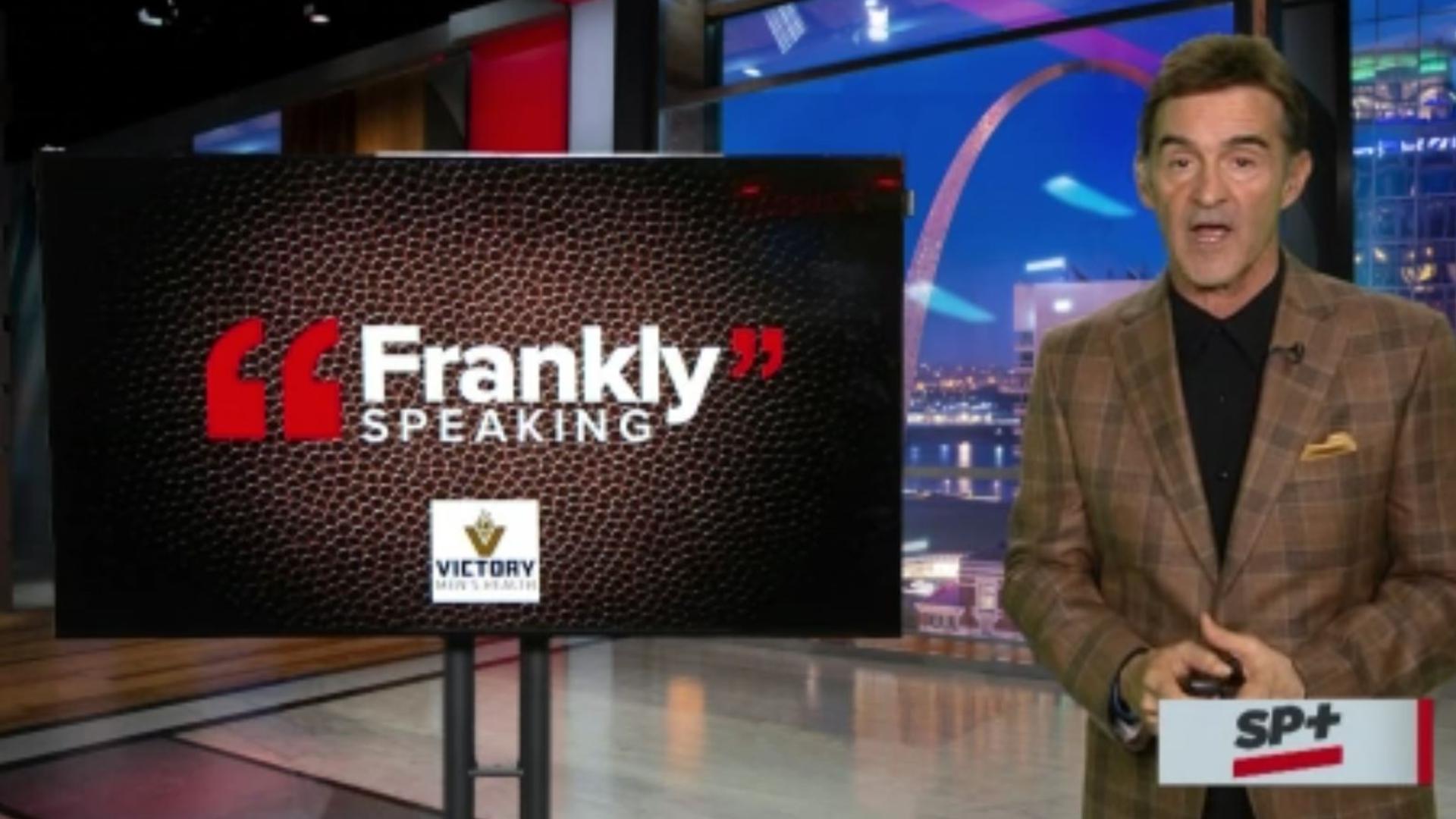ST. LOUIS — It’s a very simple five-word question: “What’s wrong with the Cardinals?”
It’s the answer that is a lot more complicated.
The Cardinals arrived in Boston for Thursday’s day off carrying a 13-25 record with them on the flight from Chicago. It’s the worst record in the NL and equals the worst by a Cardinals team 38 games into a season since the 1907 Cardinals were 10-28 a mere 116 years ago. The 1925 Cardinals also had a record of 13-25.
Despite what the Cardinals’ management team has tried to suggest, this is not all Willson Contreras’s fault.
Contreras wasn’t responsible for the timing of the odd decision to option Jordan Walker – who had the most RBIs among the team’s outfielders at the time – to the minor leagues. He wasn’t the reason Zack Thompson, one of their most effective relievers, was sent to Memphis so he could be stretched out as a starter.
There’s a combination of additional reasons for the historically bad start and one of them actually dates back at least a couple of years and indirectly does include Contreras – but it was not his fault.
The Cardinals knew for years that at some point Yadier Molina was going to retire, but it doesn’t seem like they ever had any kind of transition plan in place for when that actually happened. As much credit as they gave Molina over his career for the team’s success, it also seems like it wasn’t until after he retired and wasn’t around that they really began to understand just how valuable a player he truly was behind the plate.
His work as a catcher is only part of Molina’s value to the team – how much do you think this team misses his leadership in the dugout and clubhouse? Think some of the things that have gone wrong this year would have happened with Molina, or even Albert Pujols from last year, around? That’s very doubtful.
During the last few years of Molina’s career, the Cardinals had a variety of backup catchers, but there never seemed to be anyone who was the likely ‘heir apparent’ ready to take over when Molina stopped playing. The best candidate of that group probably was Carson Kelly, but he was traded to Arizona in the Paul Goldschmidt deal.
Even last year, when Andrew Knizner got a lot of starts while Molina was injured, it never seemed like he was going to be the choice to become the regular catcher this season. John Mozeliak, the team’s president of baseball operations, made that clear when he said at the end of the 2022 season that the team’s number-one off-season priority was to get a catcher.
Think that told Knizner what the organization thought of him?
That addition turned out to be Contreras, whom the Cardinals signed to the largest free agent contract in franchise history (for someone from outside the organization) after balking at the demands Oakland was seeking in a trade for Sean Murphy, who instead was dealt to the Braves. The Cardinals quickly moved on to Contreras and happily agreed to pay him $87.5 million over the next five years. They also were more than willing to give up their second pick in this year’s amateur draft to sign Contreras after he apparently wowed Mozeliak and manager Oli Marmol during their visit with him in Orlando.
There was a lot of happy talk during spring training about how hard Contreras was working to learn the Cardinals’ pitchers; wanting to spend that extra time with them was one of the reasons he didn’t leave Jupiter to go play for Venezuela in the World Baseball Classic.
Somehow, after Contreras had started only 23 games behind the plate once the regular-season began, that all changed. Really? Why? What exactly was he doing in that very small sample size of games that was different than what the Cardinals expected from him?
It changed at least in part because of the struggles of the pitching staff, particularly the starters, and it was easier to throw Contreras under the bus than to admit the second biggest reason for this team’s poor performance – a failure to upgrade that position over the winter.
The Cardinals’ starters so far this season, including one start from Adam Wainwright, have combined for six wins – in 38 games. That’s an average of one win a week. Even in the modern game which devalues the win statistic, that’s terrible. Three starters in the majors have won six or more games so far this season by themselves. There are 58 starters in the majors with more wins than any of the Cardinals’ starters.
Here’s another indicator of the depth of the problem with the starters – out of those 38 games, the Cardinals’ starter has gone through the first two innings retiring all six opposing batters in order once; Jordan Montgomery did that on April 8 at Milwaukee.
Are we to believe those results can be blamed primarily on Contreras? That’s highly doubtful.
A lot has been made too, correctly it would seem, about the problems the pitching staff has had with two strikes, allowing a major-league leading 155 hits. That total includes 22 home runs, which is the third most in the majors behind the White Sox (24) and Oakland (23). According to Baseball Reference.com, the Cardinals have allowed 82 runs on those two-strike pitches out of the total of 190 runs allowed so far this season.
This area seems to be the reason for much of the Contreras criticism. It is true that the pitcher’s ERA with him behind the plate is 5.13 in 201 innings, compared to a 3.92 ERA for Knizner over 131 innings. The problem with the results, and trying to blame it on Contreras, is that it could simply be the execution of the pitch that was at fault; not the type of pitch called for by the catcher.
For comparison, the pitching staff’s ERA in 2022 when Molina was catching was 3.52.
So what does this prove? It proves that Contreras is probably not the catcher Molina was. Is that a shock, considering that most observers believe that Molina will become a first-ballot Hall of Famer five years from now?
The Cardinals should have known that. If they wanted somebody better to succeed Molina they should have planned in advance for that transition, the way that a young Molina was ready to take over for another Gold Glove catcher, Mike Matheny, nearly 20 years ago. It can’t be held against Contreras that he is not Molina 2.0 when he joined the organization two months after Molina’s last game.
Did the Cardinals mis-read the type of catcher that Contreras would be? Were they concentrating so much on wanting an upgrade offensively at the position that they overlooked what a lot of people in Chicago have said for years about Contreras’ defensive performance? How much time did they spend researching Contreras’ career and using all their myriad people in the analytics department to come up with a spreadsheet of his strengths and weaknesses before they decided to sign him?
Only those privy to the Cardinals’ internal discussions before signing Contreras can adequately answer that question – but at the same time they are reviewing that evaluation they also should ask themselves this question – what expectations do they place on their catchers that is different than what is expected of a catcher on any other major-league team?
That answer might come down to this – Molina. What Molina did for all these years was perhaps at a different level than what even the Cardinals understood. Not having somebody ready when he retired who did understand that is likely going to be a mistake the Cardinals will have to deal with for years.
This has to be the lesson for the Cardinals that comes out of this, however – don’t let it happen again with the pitching staff. They have to realize that they made a big mistake last winter in not upgrading the position, coincidentally at the same time Molina was retiring. The planning for 2024 and beyond needs to begin now.
As the Cardinals have seen with trying to replace Molina, hope is not a strategy.



